There is beauty and sadness in the haunting eyes of a Cheetah
Look into a cheetah’s eyes and somehow the sensation sticks. There is a haunting beauty there, as there is something old and sad. It is an experience not easily forgotten.
This is the world’s fastest land animal, capable of going from standstill to 56 mph (90 km/h) in three seconds and of reaching speeds of up to 70 mph (113 km/h). It is an exhilarating spectacle to see one chase after prey, using its long tail to maintain balance and kicking up bursts of dirt when doing hairpin turns.
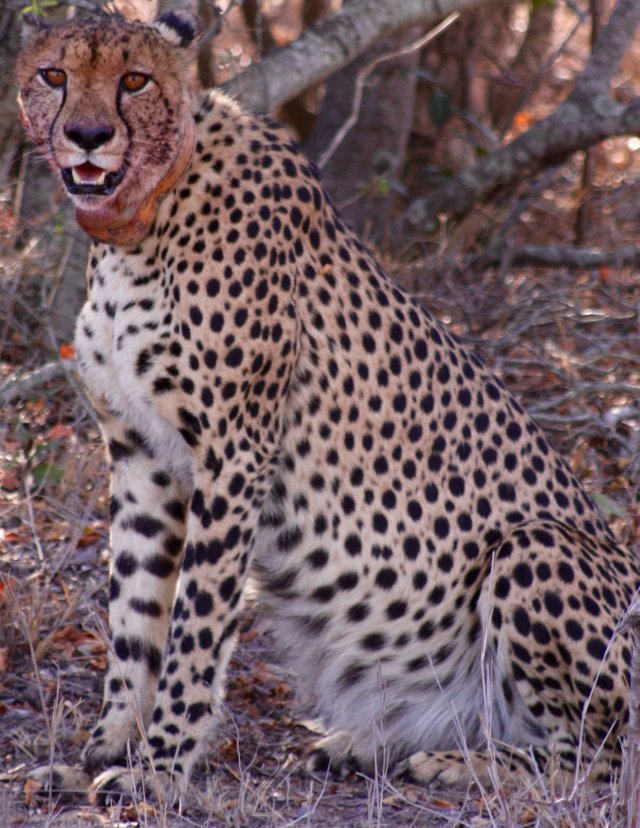
Built for speed.
The sad part is that Acinonyx jubatus, as the scientists call it, is in growing danger of disappearing from Earth. The black tear-like streaks running down its small roundish face somehow tells the story.
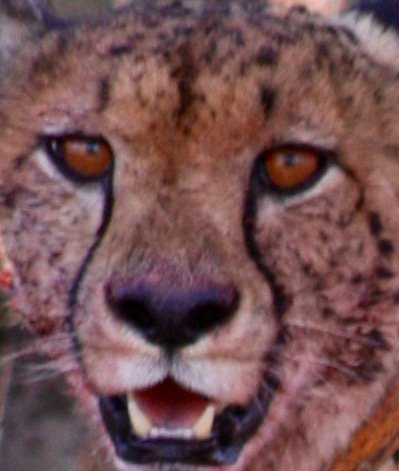
The haunting eyes and tear streeks that stay with you.
A study commissioned by the Zoological Society of London and the Wildlife Conservation Society (WCS) says there might be just 7100 cheetahs left in the world. Most of these are in Africa. Asia once was one of their favourite stomping grounds, but now there are hardly fifty left, and these are in an isolated pocket of Iran.
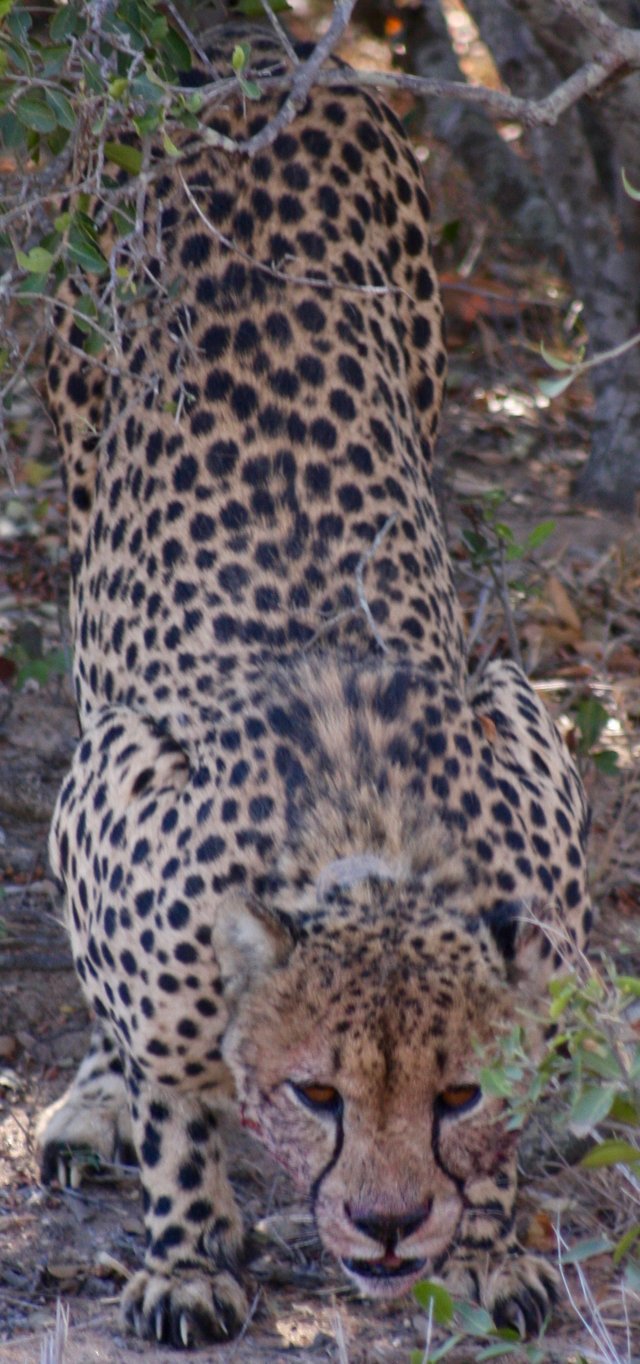
Poised for a sprint.
To check the species’ tumble to extinction, the scientists involved in the study now want it to be given the fullest possible international protection by having its status changed from vulnerable to endangered on the Red List of Threatened Species that gets issued by the International Union for the Conservation of Nature (IUCN).
There are several factors that contribute to the demise of the species.
Ironically their speed is one. That, along with their tendency to fixate on their prey while giving chase, leaves them oblivious to hazards such as thorns and broken branches that are hidden in African grasslands. Such headlong crashes can cause blindness or death.
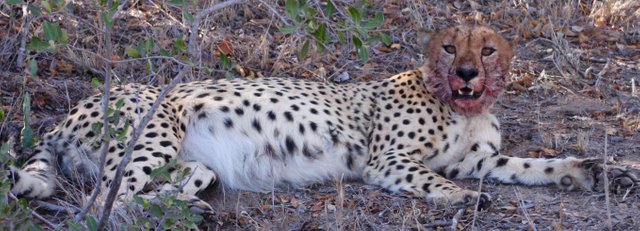
*Taking a rest after a successful chase."
As with leopard, cheetah are under constant threat from livestock farmers, trophy hunters and both the legal and illegal trade in wildlife species.
Hunters being who they are have long played their part in the decimation of the sleek species.
Trade in wildlife in particular has played no small part. Cheetahs’ timid nature has through the ages made them desirable exotic pets. Their pelts and pretty heads have made them similarly vulnerable to the trade in wildlife parts.
Similarly ironic is the way their prowess as hunters has been bringing calamity upon themselves. Farmers have over many years killed them mercilessly for the damage they cause their livestock. Many a wildlife rancher, of whom there are a growing number throughout southern Africa, will not stand for the way they chase down and kill even their fastest and often most precious antelope.
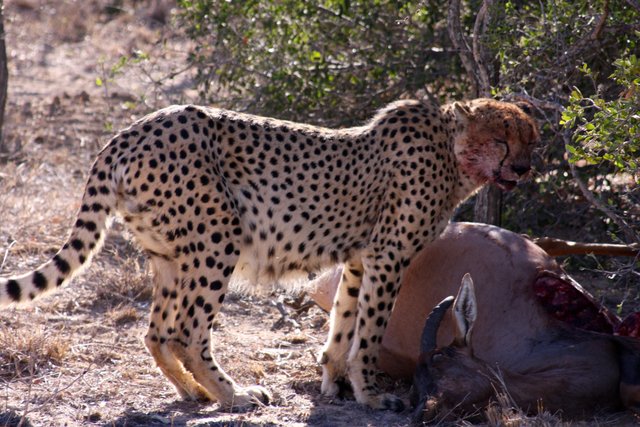
Not even this tsessebe, Africa's fastest antelope, could outrun the cheetah.
Most pervasive and in fact the root cause of all these threats is the enigmatic species’ habitat loss. Cheetahs love wide open spaces in which to roam. The trouble is that most of their natural habitat takes them outside reserves where they have practically no protection. That is where they cross the enemy lines with people.
This is why conservationists now see a new holistic approach as the only way of saving the species. The key to this is to devise ways of making local communities join in their protection. They want this approach to transcend national boundaries, both by way of better regional co-ordination of conservation strategies and by securing wider roaming areas for the animals.
Cheetahs are by nature an uncommonly fragile species.
Some experts believe its genetic problems could go back 10 000 years, when climate change might have been responsible for drastic reductions in its numbers.
Whatever the causes, the bottleneck in the cheetah's evolution might have led to substantial inbreeding among the few animals that survived, which could be the reason why it is a relatively weak breeder and a generally fragile creature whose immune system also seems suspect. This is why breeding projects like De Wildt outside South Africa’s capital city of Pretoria strive to broaden their gene pool by pairing them from areas that are far apart.
Cheetah remain one of tourists' favourite sightings in those of southern Africa's nature parks in which they occur. Now this beautiful animal is in greater need of help than ever.
Did you know they are one of the few "big cats" that cannot roar? Great piece here and very informative! Thanks for sharing :)
Thank you.